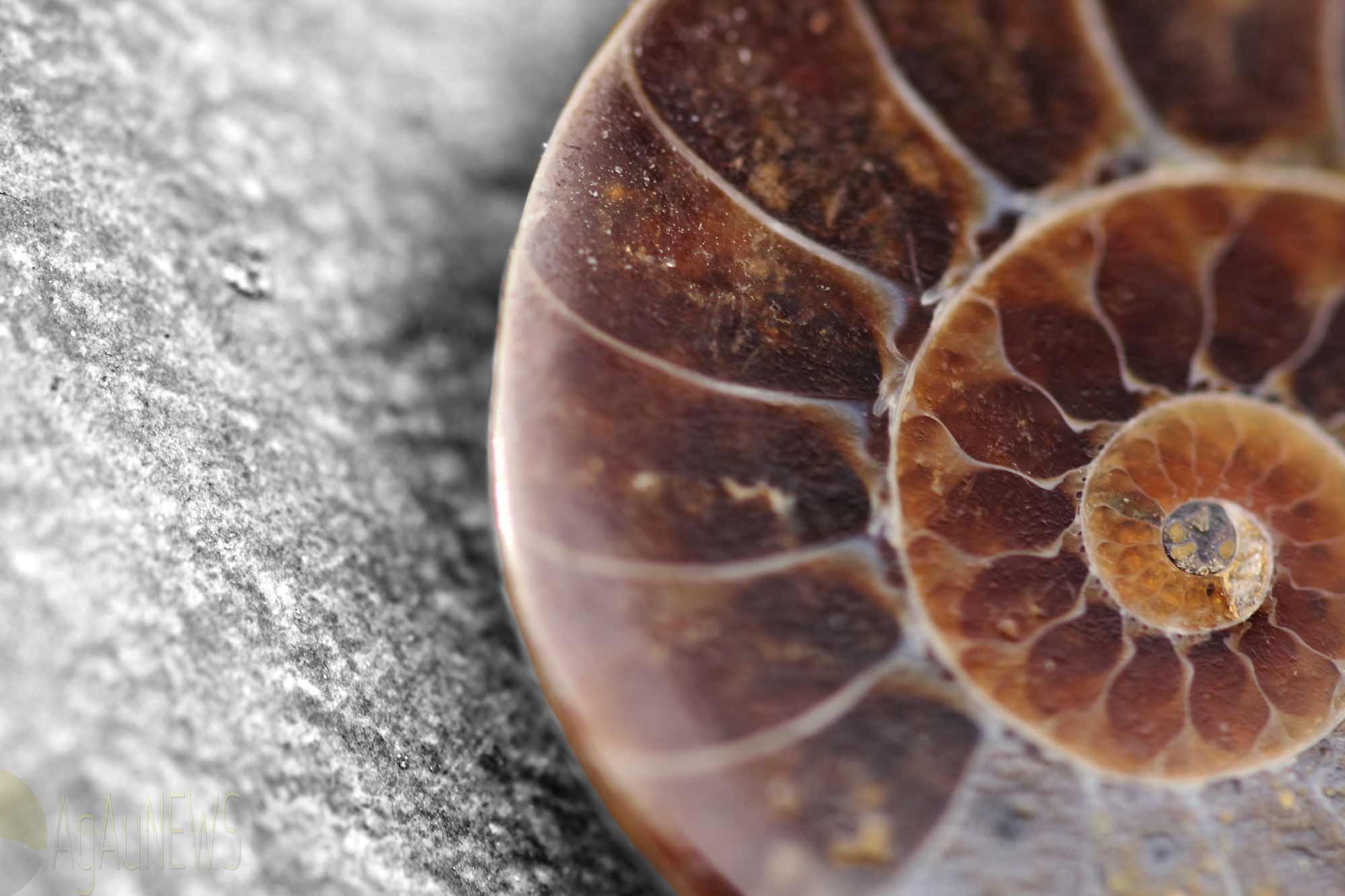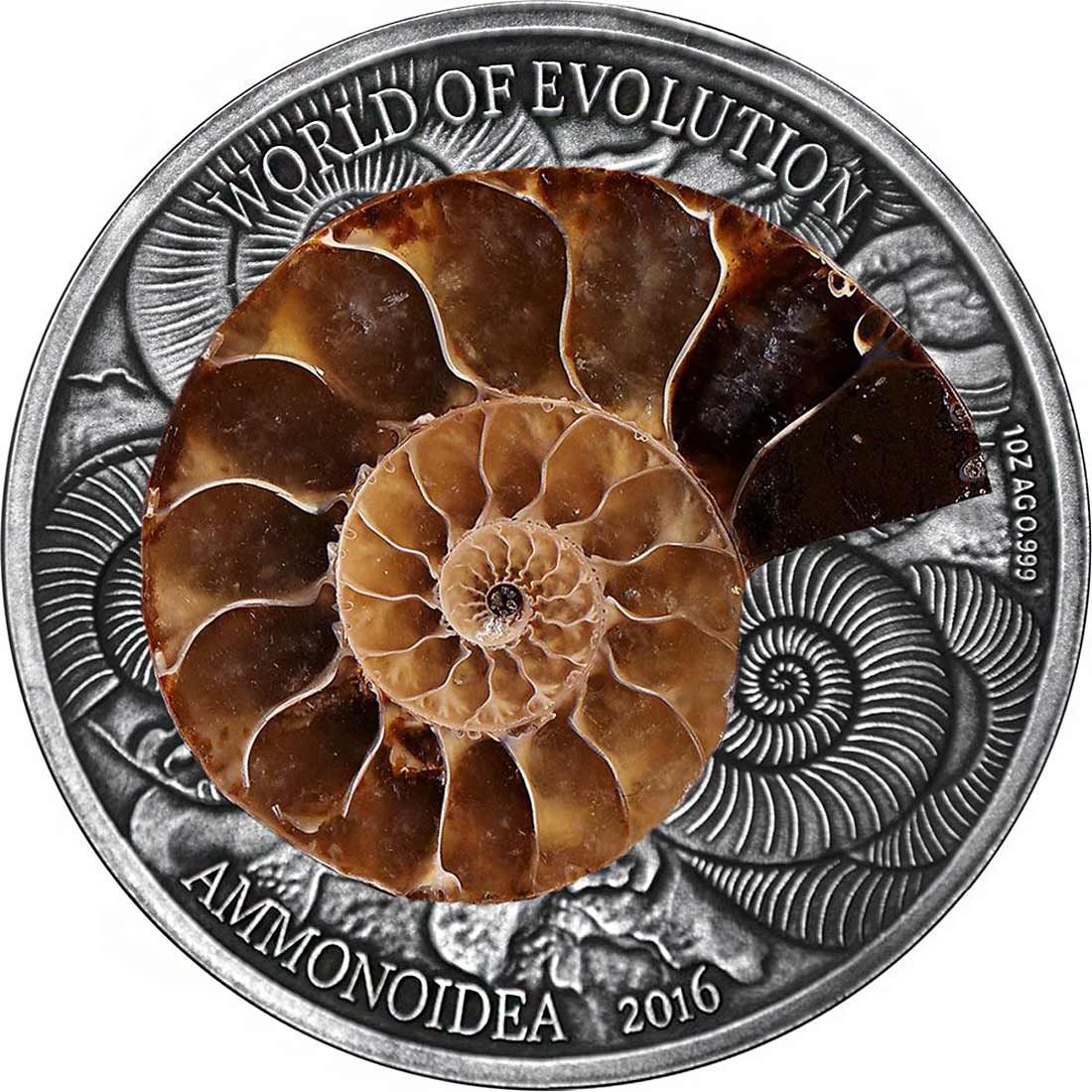Third fossil series begins with an actual fossil-adorned antiqued-silver coin.
A perennial favourite in the coin world, as well as in modern life in general, the prehistoric world with its epic timespans and vast cornucopia of gigantic, weird and wonderful life is well represented in numismatics, but never excessively so. The standard is more variable than the ancient gods and art-architectural genres we think, but it can certainly reach similar highs.
For us, the Evolution of Life, and the Prehistoric Life series from Coin Invest Trust and the Austrian Mint respectively are top of the game in recent years. The Mint of Poland debuted a decent trilobite coin earlier this year and there have been some unusual coins with mammoth ivory and dinosaur faeces embedded within them. The genre has some less than stellar entrants as well, artwork being an issue as dinosaurs in particular seem to be a difficult fit for a coin.
This latest series is called World of Evolution and is a clever mix of adornment and minting. The struck coin is basically acting as a backdrop here. Depicting a mass of ammonite shells, it appears to represent a mass death of the creatures, a not uncommon event and one that often leaves superb fossil evidence. It’s a very appropriate backdrop for the coins main distinguishing feature, an actual fossil.
Ammonites come in a huge range of sizes and are common fossils, so finding suitable samples for the 500 coins being minted wouldn’t have been that hard. Sliced lengthways and then highly polished, these make beautiful and elegant fossils. We’ve seen almost identical fossils, finished like this, coming from Madagascar where they are quite common. Whether coin collectors take to what is essentially a stuck-on object will be interesting to see. While the coin is clearly designed to have the fossil on it, there’s no attempt to actually physically integrate the fossil into it, no doubt because ammonite fossils vary in exact size and shape making standardising a cut-out very difficult.
Issued for the African state of Burkina Faso, the obverse carries that nations rearing horses emblem, certainly attractive enough. That and the antique finish suggest the involvement of MCI-Mint in the production, although we’ve not had confirmation yet. Packaging is described as being of a high quality, although we’ve yet to see images of it. Selling for just under €150, the coin should ship very early in the new year. Our friends at PowerCoin have it up on preorder.
2016 WORLD OF EVOLUTION: AMMONITE
AMMONITES
First appearing in the Devonian period and descended from an animal called a Bactrite, Ammonites roamed the seas of the earth from around 400 million years ago, and didn’t die out until around 65mya, a staggering period given the relatively infinitessimal time mankind has been around. At every one of the world major extinction events only a few species of ammonites survived, but they always bounced back until their luck finally ran out, along with the dinosaurs, at the end of the Cretaceous period.
Ammonites were predatory mollusks, very mobile and with tentacles. Very close in appearance to the still-living Nautilus, they were in fact more closely related to the octopi. Usually spiral in shape, although straight species aren’t rare, they remained buoyant using a siphuncle, basically a biological pump and siphon system. Each of the segments in the shell were a chamber that the animal resided in and the pattern of the edge of each chamber, called a a suture, is what marks out each species.
Many species probably carried ink sacs for defence, at least some were plankton feeders, and many were munched on by huge undersea reptiles called Mosasaurs. Fossils are plentiful and range from the tiny up to a colossal two meters in diameter! Some, especially in Europe, are so beautifully preserved that the original mother-of-pearl sheen is still fully intact. Others are less well preserved but show extraordinary internal detail with some having quite amazingly complex suture lines. Regardless, fossils are plentiful and make a great way to date rock formations.












Leave A Comment